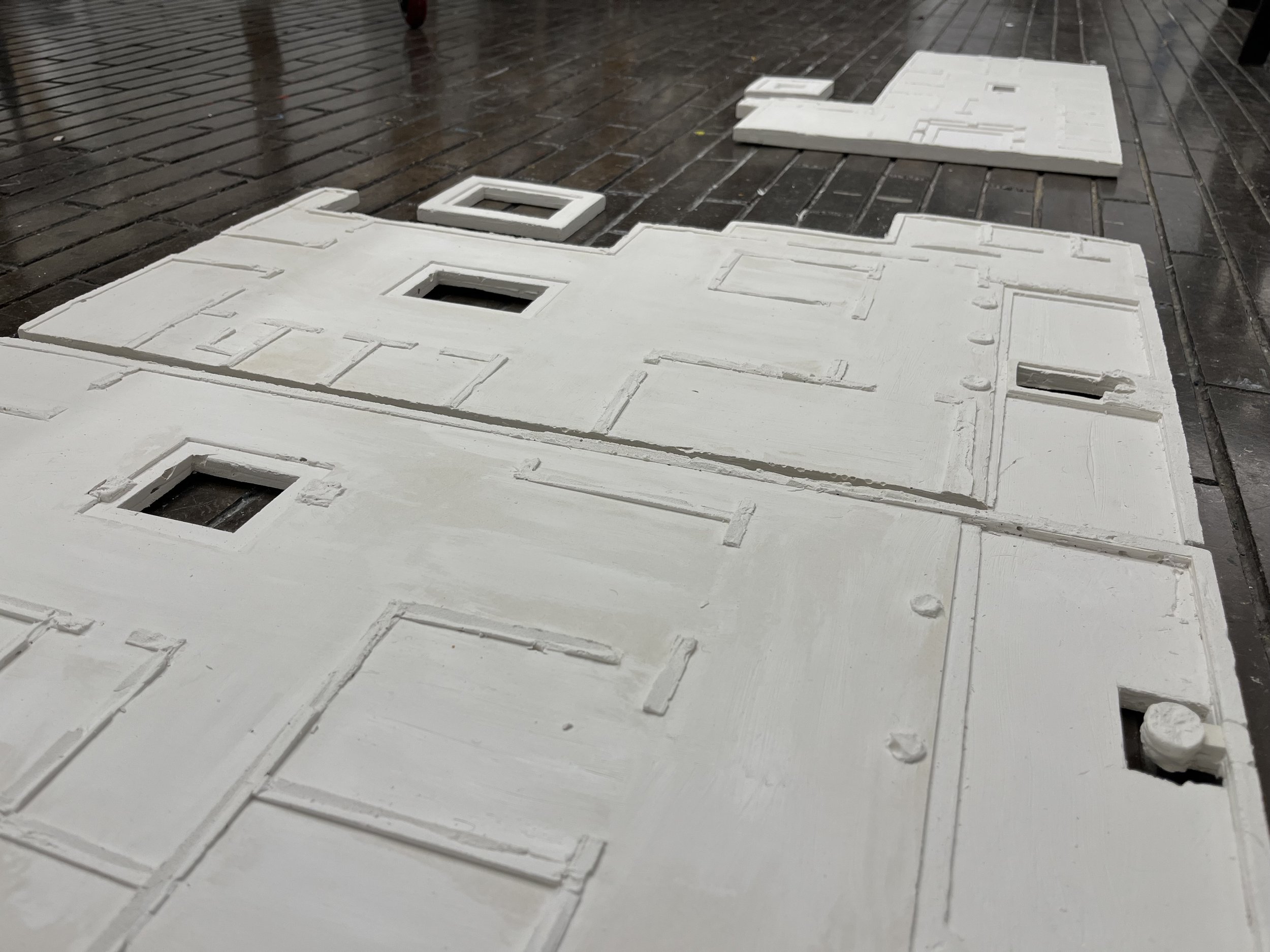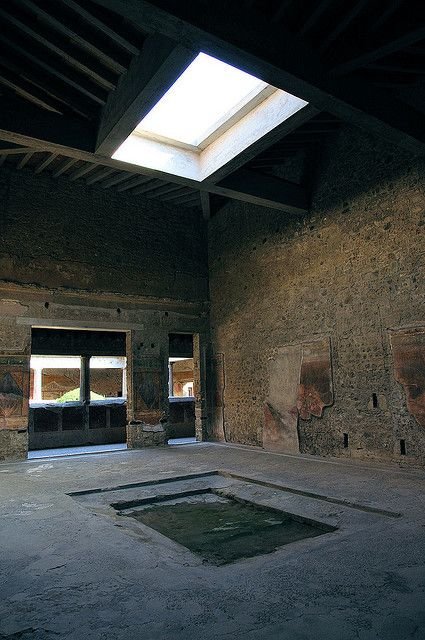Compluvium Impluvium: From Rainwater Collectors to Poetic Oases
During my fellowship at The Danish Institute in Rome, I embarked on an architectural research project that delved deep into the ancient Roman concepts of Compluvium and Impluvium. The remarkable architectural features of Domus houses, often overshadowed by more grandiose Roman structures, captured my attention and became the focal point of my study.
Domus, with its ingeniously designed atrium at its heart, is a testament to the exquisite craftsmanship of ancient Roman architects. The atrium was a central courtyard, open to the sky, where the roof gently sloped inwards toward the courtyard, channeling rainwater into a central water basin. This design was rooted in the practical necessity of collecting rainwater, a precious resource in the ancient world, but it also became a poetic oasis at the center of these homes.
The architecture of Compluvium and Impluvium is truly fascinating because it seamlessly combined a practical purpose with an artistic, almost spiritual quality. While the primary function of these features was the collection of rainwater, they also embodied a sense of beauty and tranquility. The open courtyard of the Compluvium, with its gently sloped roof guiding the rainwater, allowed residents to witness nature's dance with architecture. The location for collecting rainwater became a central focal point, blurring the line between the practical and the poetic.
Impluvium, on the other hand, served as the main source of natural light in the Domus. This design element not only illuminated the rooms but also created a connection to the outside world, bringing nature's light and energy into the living spaces. It transformed into a poetic oasis within the confines of the building, an unexpected source of inspiration and a reminder of the harmonious relationship between architecture and the natural world.
My research journey extended beyond mere theoretical contemplation. I created plaster models of Domus houses, meticulously replicating the architectural details of Compluvium and Impluvium. From these models, I embarked on a fascinating study of lighting, using the age-old photographic technique of photograms. These photograms became a visual exploration of the interplay between light, architecture, and nature, echoing the poetic essence of the Compluvium and Impluvium.
In conclusion, my fellowship at The Danish Institute in Rome allowed me to delve deep into the captivating world of Compluvium and Impluvium, revealing the architectural and poetic genius of ancient Rome. By recreating Domus houses and conducting light studies through photograms, I sought to capture the essence of these elements, transforming them into a tangible and visual representation of the profound connection between architecture and the natural world. Compluvium and Impluvium are not just architectural features; they are portals to a poetic journey that brings us closer to the eternal beauty of the past and the enduring inspiration of Roman architecture. They are remarkable examples of how practicality can be transformed into poetic beauty within the realm of architecture.







